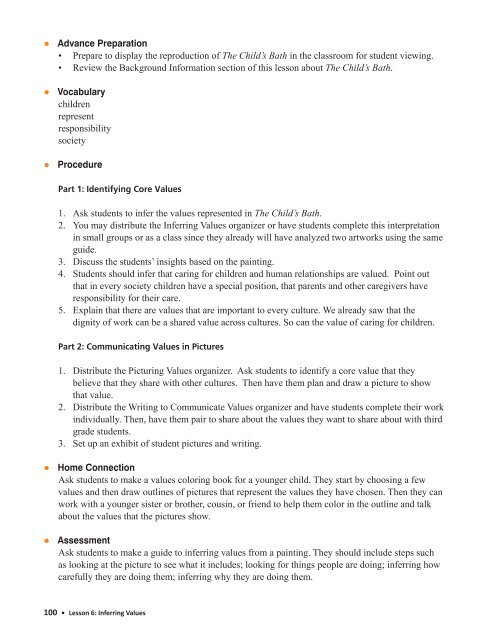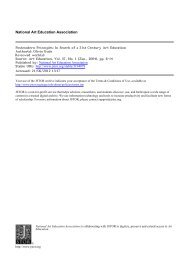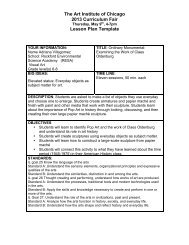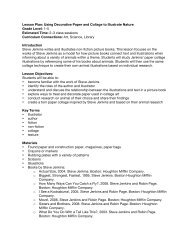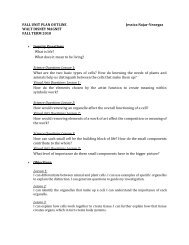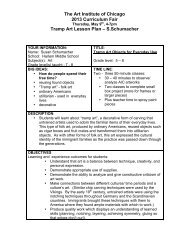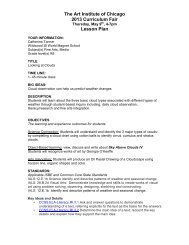Lesson 1 - LearningThroughMuseums
Lesson 1 - LearningThroughMuseums
Lesson 1 - LearningThroughMuseums
You also want an ePaper? Increase the reach of your titles
YUMPU automatically turns print PDFs into web optimized ePapers that Google loves.
● Advance Preparation<br />
• Prepare to display the reproduction of The Child’s Bath in the classroom for student viewing.<br />
• Review the Background Information section of this lesson about The Child’s Bath.<br />
● Vocabulary<br />
children<br />
represent<br />
responsibility<br />
society<br />
● Procedure<br />
Part 1: Identifying Core Values<br />
1. Ask students to infer the values represented in The Child’s Bath.<br />
2. You may distribute the Inferring Values organizer or have students complete this interpretation<br />
in small groups or as a class since they already will have analyzed two artworks using the same<br />
guide.<br />
3. Discuss the students’ insights based on the painting.<br />
4. Students should infer that caring for children and human relationships are valued. Point out<br />
that in every society children have a special position, that parents and other caregivers have<br />
responsibility for their care.<br />
5. Explain that there are values that are important to every culture. We already saw that the<br />
dignity of work can be a shared value across cultures. So can the value of caring for children.<br />
Part 2: Communicating Values in Pictures<br />
1. Distribute the Picturing Values organizer. Ask students to identify a core value that they<br />
believe that they share with other cultures. Then have them plan and draw a picture to show<br />
that value.<br />
2. Distribute the Writing to Communicate Values organizer and have students complete their work<br />
individually. Then, have them pair to share about the values they want to share about with third<br />
grade students.<br />
3. Set up an exhibit of student pictures and writing.<br />
● Home Connection<br />
Ask students to make a values coloring book for a younger child. They start by choosing a few<br />
values and then draw outlines of pictures that represent the values they have chosen. Then they can<br />
work with a younger sister or brother, cousin, or friend to help them color in the outline and talk<br />
about the values that the pictures show.<br />
● Assessment<br />
Ask students to make a guide to inferring values from a painting. They should include steps such<br />
as looking at the picture to see what it includes; looking for things people are doing; inferring how<br />
carefully they are doing them; inferring why they are doing them.<br />
100 • <strong>Lesson</strong> 6: Inferring Values


